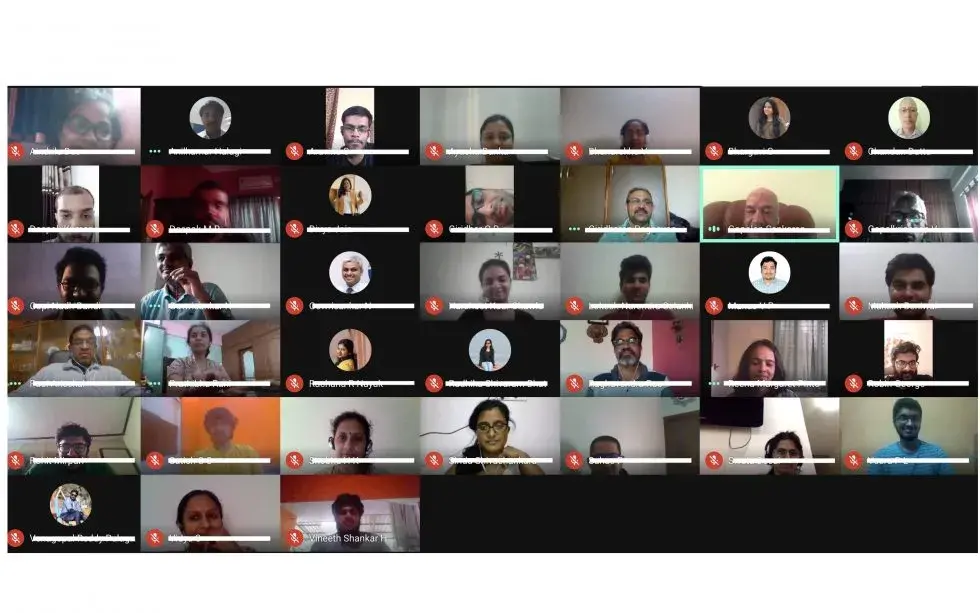It is slightly over a year since we closed our office premises and started working from home. I had shared some initial observations in my earlier blog in July 2020. We have formed some methods to manage WFH and still learning to improve the way we do things.
Some of the observations and practices we have in place are shared below.
Daily plans and deliverables:
When each team member is in a remote location and working, it is easy to lose sight of what each one is doing on a given day. In some projects, the allocation of work is dynamic. Our analytics team gets a bunch of financial reports and transaction requests from a variety of entities attached to our clients. Allocation across the team is done every morning and most of them need daily review and reporting to client. Every team member knew the tasks allocated to them and that of others. When a member finishes early, they put up their hand and take up any available report for analysis, thereby keeping the team productivity high. The team uses shared spreadsheet for allocation and chat rooms to update interim status, clarify doubts etc.,.
Clarity of day’s plan helps individual members focus and helps report unambiguous status update at the end of the day.
Over communicate with caution – use appropriate tools and techniques:
Everyone recommended that it is important to communicate and stay in touch with all co-workers. It made sense. Most recommended over communication to overcome dangers of remote working and the resulting lack of understanding. All this made sense. However, in reality, we found it can get tiring. When volume is high, important communication can be missed due to fatigue. So, we used multiple forums to handle different types of communication. Time critical queries were discussed in a video chat or a specific chat room. Queries, which do not hamper your work progress but need to know, were posted in a query sheet. During breaks others scan the query sheet and leave the answers.
Multiple forums/chat rooms, were created to provide flexibility without intruding in to the privacy of individuals. For example, it was decided that there will be an online all-hands meet every evening at 5PM. Whoever is able to make the time, can join and leave at will.
Once every week, all project teams, share their weekly progress and plans with everyone. People share their learning from the previous week.
On Fridays, the same meeting time is dedicated to fun evening, where even some family members join and many participants sing or narrate stories. Like an online happy hour.
Many small informal chat rooms are dynamically created for smaller groups to get together and discuss their topics of interest.
Shut the door on micromanagement:
When we are physically away from each other, it is important to keep in mind that, unlike in office premise, each person may be in a different environment and could be facing a variety of constraints and distractions. Each one will find a way to work around their constraint and ensure their commitment for the day is met. Focus and spend more energy and time to make the expectation clearer, deliverables well defined.
While micromanagement is discouraged in general, in WFH situation, micromanagement can prove to be a disaster.
Sensitize everyone to empathy:
We often read and hear about the importance of empathy. More often than not, the message is about how managers/management need to be empathetic. Empathy needs to be mutual and we all agree to that. In WFH, the leaders are at higher stress level compared to individual contributors. Managing to consolidate and review work done at different locations by different contributors, each having their constraints and peculiarities, makes the job of the manager exponentially harder. It is important that the team members are sensitized to this situation and create empathy in them towards their supervisor/manager/leader. Such empathy helps the members understand the need for team discipline and clear communication, reducing the stress level overall in the team.
I must add, in our case, our customers were empathetic and that helped us get through the transition.
WFH has certainly been stressful for many in different ways. Coordinating activities and people, within the teams, has been a great challenge. However, our top two struggles have been recruitment and onboarding of new recruits. WFH destroyed the casual learning opportunities you have, while you are amongst people discussing ideas in the corridor.
There are so many things we have learnt over the year and will be happy to share more details with anyone interested. Also interested to hear from you, your learnings and tips that can be used by us and our other readers.




